bracket fungus
Nature constantly surprises us in new ways. A beautiful example of this wonder is the fungus mushroom. The picture above is an example it, where a fungus has grown on an old wooden log. At first sight, unique color, structure and layering of this fungus attract our attention. This type of fungus usually grows in wet, dark and shady environments forest, but sometimes it is also seen on old wooden logs where moisture and shade are present. The structure of the fungus is semi-circular and it has changed from dark to light color from the center to the outside. The deep black color in the center and the light brown-yellow color on the outside create a remarkable pattern. This type of layered fungus is commonly called polypore or bracket fungus. They grow on wood and slowly break down the wood part a natural recycling process.

Fungi are not only aesthetically important, but also ecologically important. They decompose dead organic matter, which returns nutrients from dead plants the soil and makes them available for new plants. Fungi are therefore an essential part this continuous cycle. Especially fungi that grow on dead wood, keep the environment clean and help maintain the biological cycle.
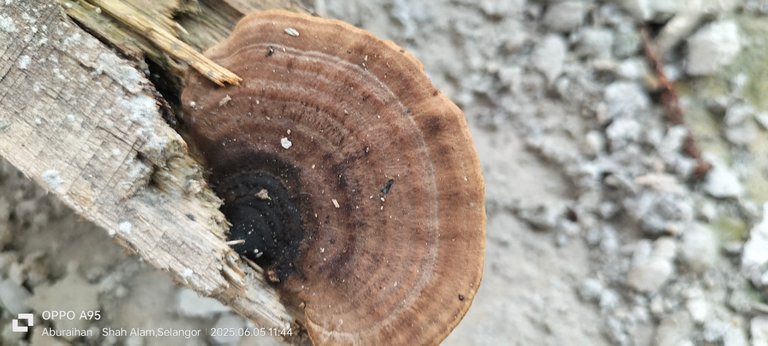
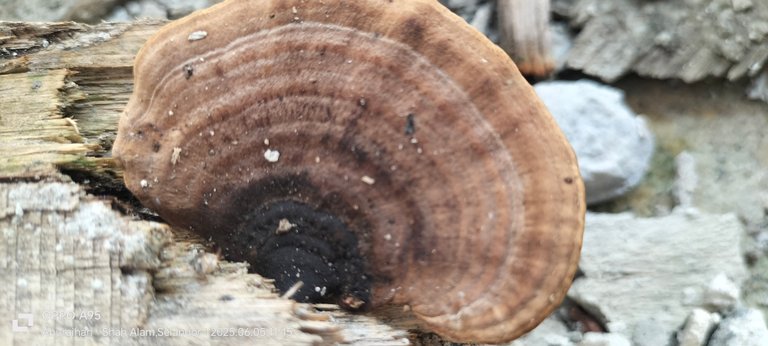
Analysis of the color and structure fungus suggests that it may belong a common species called Trametes versicolor, which is called Turkey Tail in English. However, closer, expert and microscopic observation is required identify the specific species. However, the aesthetic beauty revealed in its external structure and layering is simply fascinating.
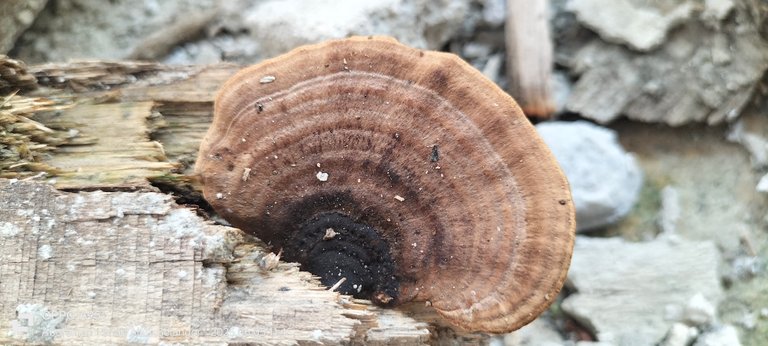
Such natural scenes are happening right before our eyes all the time, but we often dont notice them. Every small element of nature teaches about the cycle life, the struggle for survival, and the importance balance. A tiny fungus shows us how even organisms that are out of sight maintain the balance of the environment.

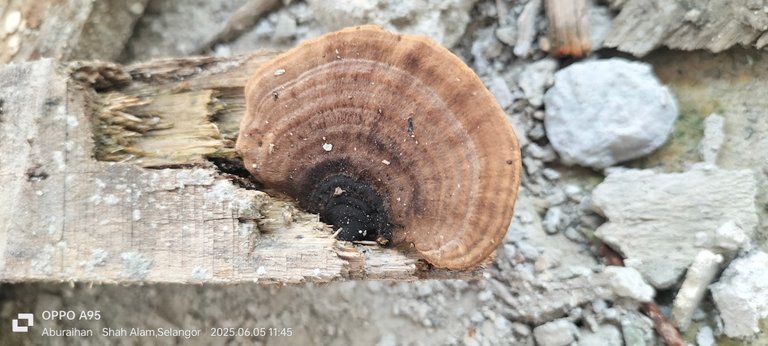
In the background, some broken wood and stones are seen, indicating a man-made or abandoned environment. Even in such conditions, the fungus has proven its existence, which is an extreme example of natural adaptation. The tolerance of nature and the tenacity of life are clearly revealed through this picture.
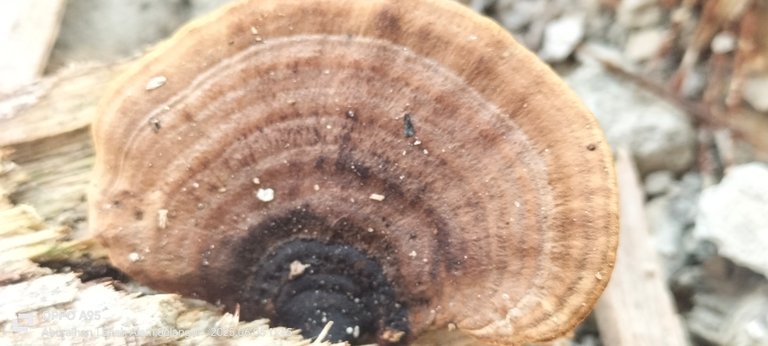
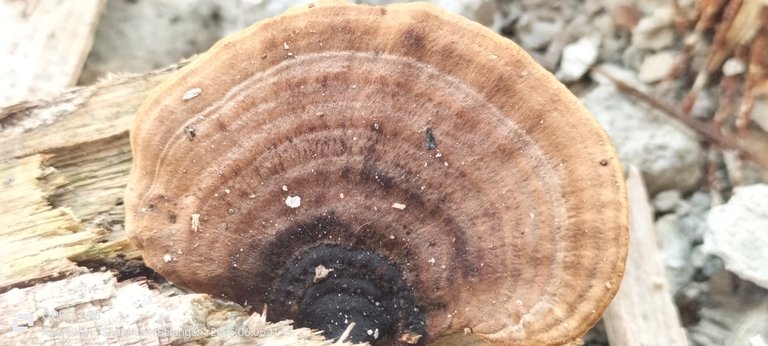


Finally, it can be said that the picture of this fungus is not just a reflection of an organism, but it is a wonderful document of our biodiversity, environmental balance, and natural order. We should pay attention to these small yet important elements of nature and raise awareness to preserve them.
| Device | Name |
|---|---|
| Android | oppo A95 |
| Camera | 4.71 Mm, f/1.0, (iso100) |
Photography:
Location| Malaysia 🇲🇾🇲🇾🇲🇾
Short by |@aburihan
Link to original community|
https://www.inaturalist.org/observations/287084451
Latitude Longitude Map|
https://www.openstreetmap.org/?mlat=3.125902&mlon=101.504848#map=12/3.1259/101.5048